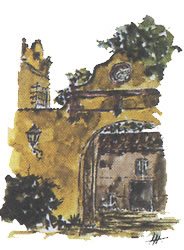Crigler-Najjar Syndrome – UGT1A1 gene
Crigler-Najjar syndrome is a serious hereditary disorder characterized by an elevated level of bilirubin in the blood (hyperbilirubinemia) and jaundice. Bilirubin is eliminated from the body only after unconjugated bilirubin is converted to conjugated bilirubin. In Crigler-Najjar syndrome, jaundice is evident at birth or in infancy. Severe hyperbilirubinemia can lead to kernicterus, which can cause severe central nervous system damage, including bilirubin encephalopathy (kernicterus), which is usually fatal, or can lead to permanent neurological sequelae. Newborns with kernicterus may manifest lethargy, hypotonia, hypertonia, and arched back. In addition, kernicterus can cause other neurological problems, including choreoathetosis, hearing problems, or intellectual disability.
Crigler-Najjar syndrome is divided into two types: type 1 (CN1) is very severe, and affected individuals may die in infancy due to kernicterus, although with proper treatment, they may survive longer; type 2 (CN2) is less severe and those affected are less likely to develop kernicterus, with most affected individuals surviving into adulthood.
This process is due to mutations in the UGT1A1 gene, located on the long arm of chromosome 2 (2q37). The UGT1A1 gene encodes the enzyme bilirubin uridinediphosphate glucuronyltransferase (bilirubin-UGT), which is found mainly in hepatocyte cells and is necessary for the removal of bilirubin from the body. The enzyme bilirubin-UGT performs the chemical reaction of glucuronidation. During this reaction, the enzyme converts unconjugated bilirubin to conjugated bilirubin. Conjugated bilirubin dissolves in bile and is excreted with solid waste.
At least 85 mutations in the UGT1A1 gene have been identified in people with Crigler-Najjar syndrome. Genetic lesions in individuals with Crigler-Najjar syndrome, both type 1 and type 2, can occur in any of the exons that make up the UGT1A1 gene. Mutations involving the deletion or alteration of a large number of amino acids, usually frameshifts or premature stop codons, often result in enzymatic inactivation of bilirubin-UGT and thus are associated with CN1, whereas people with Crigler-Najjar syndrome type 2 (CN2) have less than 20% of normal bilirubin-UGT function. However, point mutations have also been located, usually associated with CN2, which cause complete enzymatic inactivation (CN1) by being located in highly conserved areas or in essential regions.
Crigler-Najjar syndrome is inherited in an autosomal recessive pattern, which means that both copies of the UGT1A1 gene in each cell have mutations. A less severe condition called Gilbert´s syndrome can occur when one copy of the UGT1A1 gene has a mutation.
Tests performed in IVAMI: in IVAMI we perform the detection of mutations associated with Crigler-Najjar syndrome, by means of the complete PCR amplification of the exons of the UGT1A1 gene, and their subsequent sequencing.
Recommended samples: non-coagulated blood obtained with EDTA for separation of blood leucocytes, or a card with a dried blood sample (IVAMI can mail the card to deposit the blood sample).



